Welcome to another post of the Bizarre Natural Phenomena series! Today we're discussing volcanoes again (in case you missed it, my first post was on volcanic lightning).
Imagine being a witness to this:

(Image source:smithsonianmag.com/science-nature)
No, you're not teletransferred on another dimention, you're not starring in an alien movie, you're just looking at lava pouring down a volcano. In Java (Indonesia), the volcano of Kawah Ijen presents the spectacular sight of blue lava with eruptions we don't get to see every day.
Short quiz:
- - What is a volcano?
- One of earth's chimneys that spit out hot lava, volcanic ash and gases straight from the earths's mantle.
(wikipedia.org)
- - What is lava?
- It's molten rock created by geothermal energy. Extreme temperatures and pressure cause the rocks to melt and spill out of the volcano.
(wikipedia.org)
- - What color is it?
- Colors range from red to orange.
(smithsonianmag.com/science-nature)
The magic behind the extraordinary
But WHY does this volcano sprew blue lava? Well, actually, it doesn't! This eerie blue color is caused by the combustion of sulfuric gases. Kawah Ijen sits on an incredible reserve of sulfur. When the sulfuric gases emerge, during an eruption, they reach the surface at extremely high pressures and temperatures (sometimes even higher than 1,112°F -600°C).
As soon as they meet the oxygen in the atmosphere, the sulfur burns, heated up by the scorching lava. The products of this combustion are: SO2 (gas) and electric blue flames (light). Those flares can reach a height of 16 feet (5 meters) and create a view out of this world. In daylight the blue flames are invisible, but at night the spectacle is dazzling!
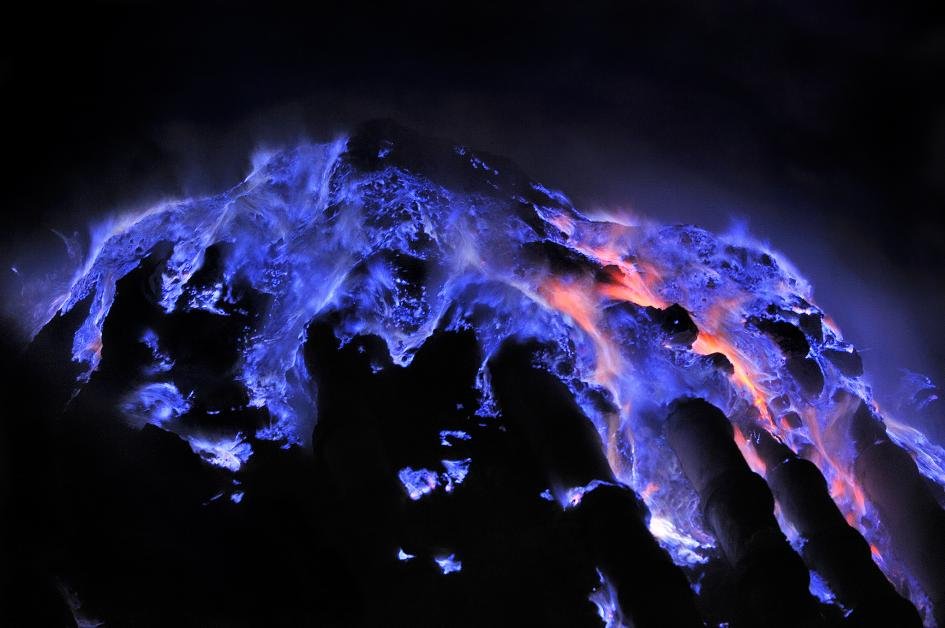
(Image source:nationalgeographic.com)
If temperatures are low enough, the gases can condense into liquid sulfur (SO3) which later solidifies or continues to burn as it flows down the volcano slopes and reach a highly accidic crater lake. The lake measures a diameter of more than half a mile and holds more than 40 million cubic yards of stunningly turqoise water. The water gets its miraculous light blue color from the magma-originating sulfuric gases that enrich its hydrothermal waters.
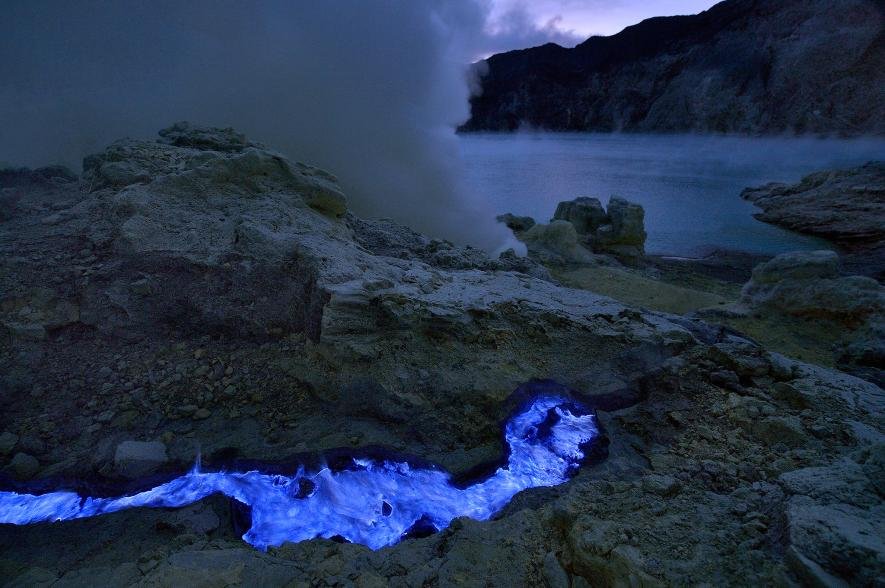
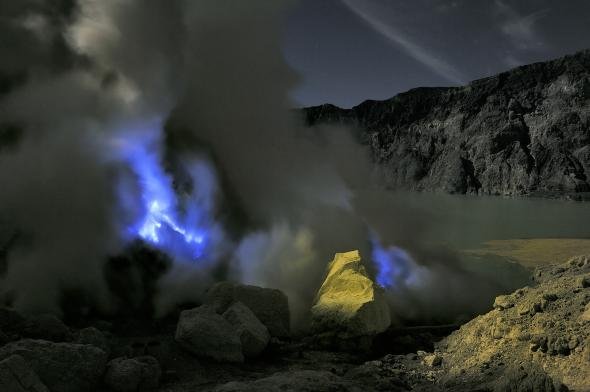
(Image source:nationalgeographic.com)
Brave (or crazy) enough
An adventurous photographer, Olivier Grunewald, managed to shoot Kawah Ijen so that we get to admire its raw beauty from the comfort of our home. Another brave man, our stormchaser George Kourounis (remember him from yesterday's post "The Door To Hell"?) set out to pick samples of the lake water for further test. The lake has pH of <0.5, pretty toxic, don't you think? Keep in mind that battery acids have a pH close to 1. This aluminum can kept sizzling for 20 minutes in the lake before it was fully corroded.
Reaping the benefits at a high cost
The area is rich in solid sulfur which is mined by local workers. Miners have been climbing the dangerous slopes of the volcano to set up a piping system. They used the pipes to capture sulfuric gases emerging from the vents of the area in order to lead them to solidify in a level work site. Their job is neither easy, nor safe. The gases are toxic and poisonous, the working paths on the volcano are dangerous and many workers have lost their lives in unforseen gas releases or phreatic eruptions.
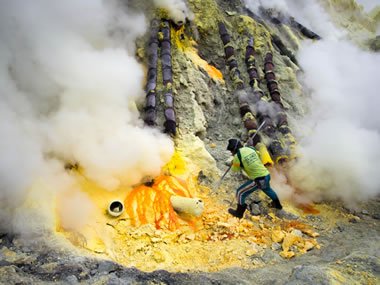
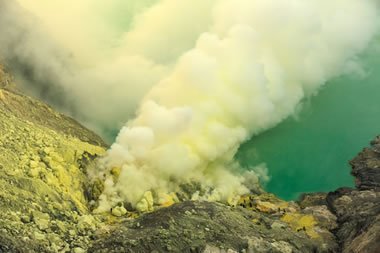
This youtube video explains very well the phenomenon of the blue flaring volcanic gases and its toxic crater lake.
References:
Another strange spectacle story comes to an end. For those of you who want to learn more about nature's weird sights there are 4 more articles to feed your hungry-for-knowledge soul: Volcanic Lightning - Bioluminescence (Glowing Algae) - Flammable Ice - The Door To Hell and my list is waiting to be updated soon!
Thank you for reading this article. If you like my content, follow me, @ruth-girl, for more doses of natural wonders!
Don't forget to check the @steemstem project, a community-driven project meant to promote well-written, high-quality, STEM-related content (STEM as for Science, Technology, Engineering and Mathematics).
And for those interested in education, @steemiteducation is here to join all steemian educators in their common cause of making our job easier, more effective and more fun!
Until our next post,
Steem on, people, and keep smiling!

